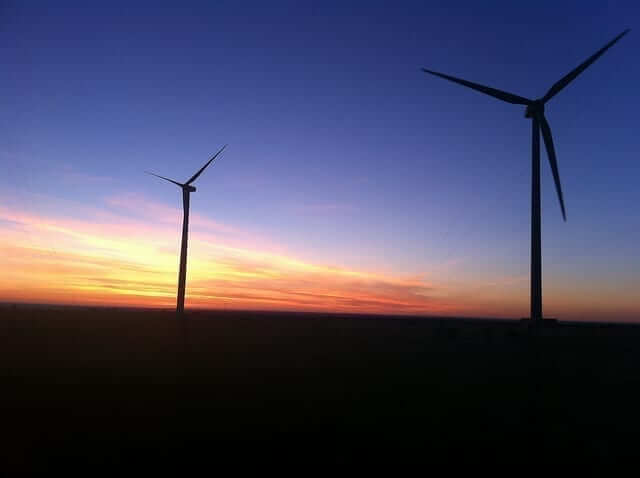More of wind power’s savings coming soon to the Northeast
From Rhode Island to Washington, D.C., the Northeastern United States made a big push this summer to bring more clean, affordable wind power to millions of families and businesses.
A slew of new legislation will help grow wind energy in one of the country’s most populous regions, proving big populations and big amounts of renewable energy can go hand-in-hand. The measures also include a new push to finally begin realizing America’s offshore wind power potential. Here’s a look at some of the recent developments, and what they’ll mean for our clean energy future.
One if by land, two if by sea– Massachusetts chooses both
The Massachusetts state legislature ended July by passing a comprehensive energy bill that will help grow both land-based and offshore wind energy in significant ways.
Under the new legislation, utilities will buy 1,600 megawatts (MW) of offshore wind capacity over the next dozen years. That’s enough to power more than half a million typical American homes, while positioning Massachusetts as the country’s offshore leader, creating entirely new jobs, supply chains and robust activity in the area’s ports.
However, offshore wind was just one component of the legislation. State utilities will also be required to enter into long-term contracts (considered the gold standard for getting projects built) for nearly 9,450,000 megawatt hours of new clean energy resources, or about as much as the nearby New Hampshire Seabrook nuclear plant generates every year.
These long-term contract structures help utilities lock in low prices on wind energy, allowing them to deliver cheap wind energy to the state’s families and businesses. They’re one of the reasons wind power can help save over $350 million on consumers’ electricity bills through 2050, while saving another $4.5 billion by helping to keep natural gas prices low.
All of this new clean energy will help Massachusetts make meaningful progress toward its carbon reduction goals. Under the Massachusetts Global Warming Solutions Act of 2008, the state set targets to reduce its greenhouse gas emissions to 25 percent below 1990 levels by 2020, and 80 percent by 2050. The Bay State will need affordable emission-free electricity to meet these goals, and growing both land-based and offshore wind power is a cost-effective way to achieve these goals.
The Empire State starts creating a renewable energy empire
Not to be outdone, New York began August by approving a measure to generate half of the state’s electricity from renewable sources by 2030. That’s an important move coming from the country’s third largest state economy, proving that clean energy and healthy economics aren’t mutually exclusive. New York’s 50 percent clean energy standard is projected to create net benefits totaling $1.8 billion by 2023.
The new rule is expected to attract billions of dollars of private investment into the state’s economy while cutting its greenhouse gas emissions by 40 percent over the next 15 years.
As the biggest, fastest, cheapest way to cut carbon pollution, it’s also expected that wind power will generate a large portion of New York’s new renewable energy. That will bring significant benefits to the state’s families and businesses. Growing wind could save New Yorkers over $1 billion on their electricity bills through 2050, on top of nearly $14 billion in savings from protection against conventional fuel price fluctuations. Wind power already supports up to 2,000 well-paying jobs in the state and eight factories that build wind-related parts and materials, and these numbers will only grow as more wind power comes online.
So it’s no surprise that 89 percent of New Yorkers favor increasing the state’s share of wind energy, according to a recent poll from The Nature Conservancy. That mirrors the national mood, where 91 percent of likely voters support expanding wind power, including over 80 percent of self-described conservatives, showing this support comes from both sides of the aisle.
Elsewhere in the Northeast
Rhode Island and Washington, D.C. also made significant moves this summer.
The Rhode Island state legislature voted to increase the state’s renewable energy standard to 40 percent by 2035 in June, while the nation’s capital passed a 50 percent by 2032 measure.
It’s no surprise states across the country are choosing to increase their share of renewable energy. State renewable energy standards have proven to be smart policies with long track records of success. Thanks to clean energy standards, the U.S. has 200,000 American jobs, $20 billion of investment, $7.5 billion a year in environmental benefits from reduced air emissions, and up to $4.9 billion in consumers savings from reduced energy prices because of renewable energy development created to meet state standards through 2013, according to recent research by the Lawrence Berkeley National Laboratory (LBNL) and National Renewable Energy Laboratory (NREL).
One of the reasons wind power is able to deliver these benefits is because its costs have fallen dramatically: wind became 66 percent cheaper over a six year period. American innovation and improved domestic manufacturing drove technological advancements that allow wind turbines to reach stronger, steadier winds, making projects financially successful and feasible in more parts of the country.
This summer’s developments throughout the Northeast are a progression of moves seen across the country. California, Oregon and Hawaii all recently passed legislation to source 50 percent or more of their electricity from renewable sources, meaning millions of additional Americans are keeping their lights on with clean energy from coast to coast.




